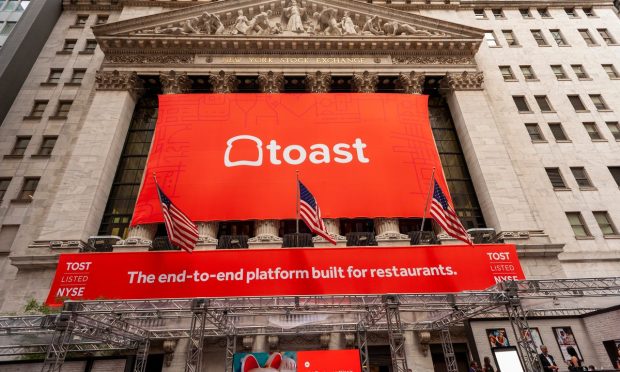Toast Aims to Secure Restaurants’ Loyalty with B2B Payment Tools

To set its offerings apart from the many competitors on the market, Toast is working towards becoming restaurants’ go-to — not just for consumer payments, but also for business-to-business (B2B) transactions. In its first earnings report after going public in September, the point of sale (POS) and restaurant management platform announced Tuesday (Nov. 9) that it is prioritizing restaurants’ back-of-house needs.
You may also like: ResTech POS Startup Toast Prices Shares at $40 Each for $20B Valuation
“We’re investing pretty heavily in backing innovation in and around what I would call accounts payable automation, as well as food-cost optimization,” Chris Comparato, CEO of Toast, told analysts on a call. “We think there’s a unique opportunity to automate even more of the back office, if you think about monetizing things like bill pay and other activities on the backend of restaurants that are critical to their success.”
Toast is far from the only company in the accounts payable (AP) automation space (and Comparato did not coin the term). For instance, AP automation company Plate IQ announced a $160 million Series B fundraise on Thursday (Nov. 4).
“What we’re trying to do, if you like to think of it that way, is provide the same level of ease of use, transparency and security that you might see in a consumer transaction over in a B2B payments transaction,” Plate IQ CEO Barrett Boston told PYMNTS in a recent interview.
See also: With $160M in New Funding, Plate IQ Looks to Improve B2B Payments
Additionally, payments technology firm Priority Technology Holdings, Inc. announced a partnership with business process automation provider OneDataSource on Monday (Nov. 8) to improve accounts payable (AP) processes for quick-service restaurants (QSRs).
Still, Toast has the advantage of its existing relationship with restaurants, securing their loyalty with its POS product, its ordering tools, its kitchen display system (KDS), its team management tools and more. With restaurant managers already frustrated with the tangle of disparate tech solutions needed to keep restaurants running efficiently, offering the ability to automate AP through the tech provider that handles other parts of the business is a huge differentiator for Toast.
Additionally, Comparato discussed how consumers’ behaviors are evolving on the call, saying, saying, “We continue to see a consistent trend of guests returning to restaurants, as well as off-premise trends such as online ordering, delivery and takeout sustained, which demonstrates that these consumer behaviors are here to stay for the long term.”
Sure enough, according to PYMNTS data from the How We Eat Playbook, created in collaboration with Carat, from Fiserv, which features a census-balanced survey of more than 5,200 U.S. adults, consumers now are 31% more likely to buy meals to be eaten at home than they are to dine on-site. Specifically, the study found that 67 percent of restaurant customers opt to order their food for either pickup or delivery, compared to 51 percent who report dining on site.
Read more: Up for Grabs: Restaurants and Grocers See Path to Picking up 200 Million New Customers
The company offers ordering products, and over the summer it launched an Order & Pay at the Table tool for on-premise orders. These products place the company in competition with Olo, and the competition will intensify in years to come, with the launch of Olo Pay planned for 2023. Olo’s CEO Noah Glass stated on an earnings call Tuesday that the company has hired Tor Opedal, who previously served as Vice President of US Market Development at Mastercard, as its Vice President and General Manager of Payments. For now, however, Toast’s revenue remains an order of magnitude larger than Olo’s, giving the former company plenty of room to maneuver.
Related news: Olo Aims to Corner the Fast-Food Chain Market
Shares of the Boston-based company fell more than 15% Wednesday after the results were released. However, it is still roughly $10 above its IPO price of $40, which was completed six weeks ago, and the company’s market value remains over $25 billion.
